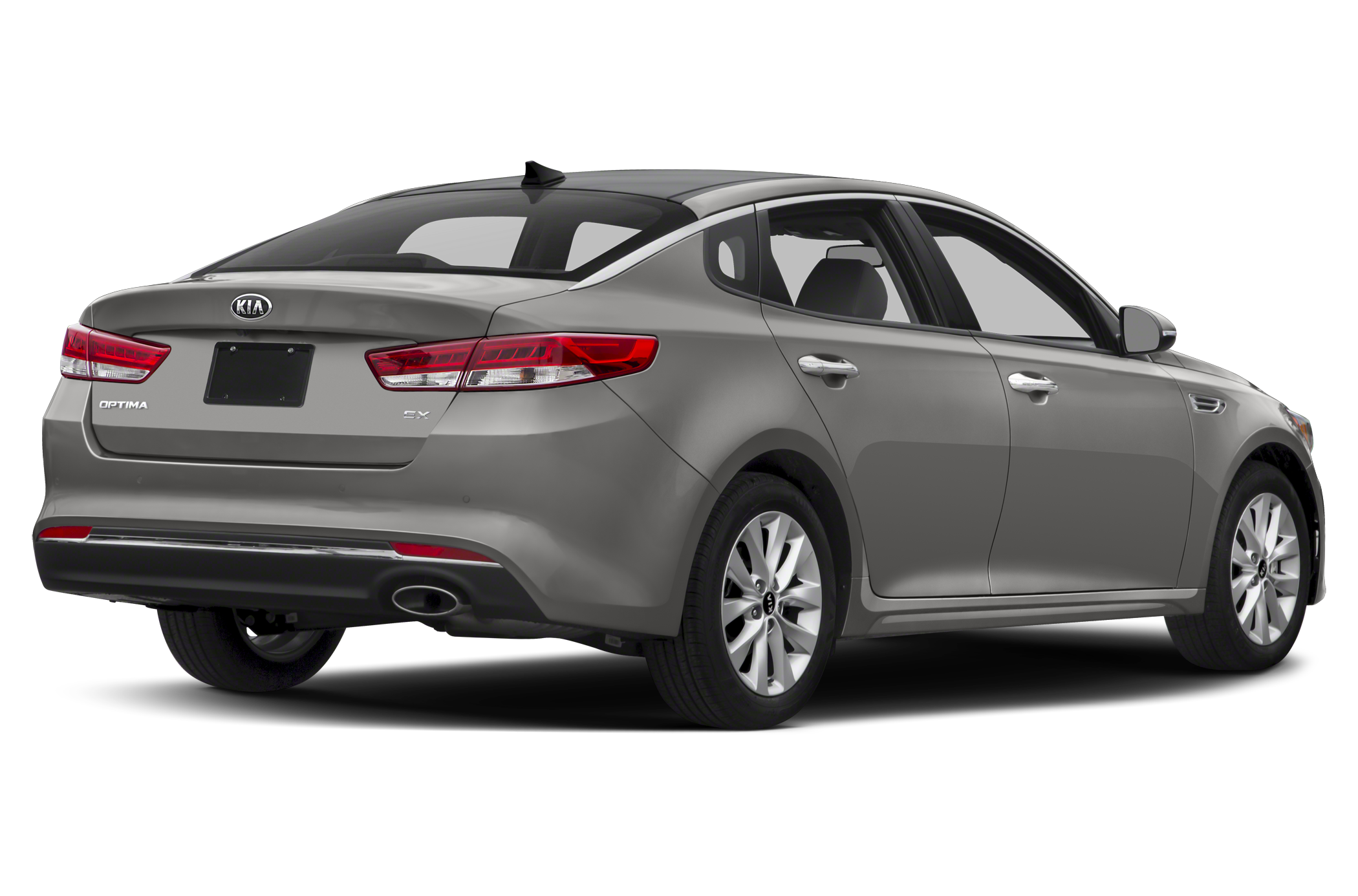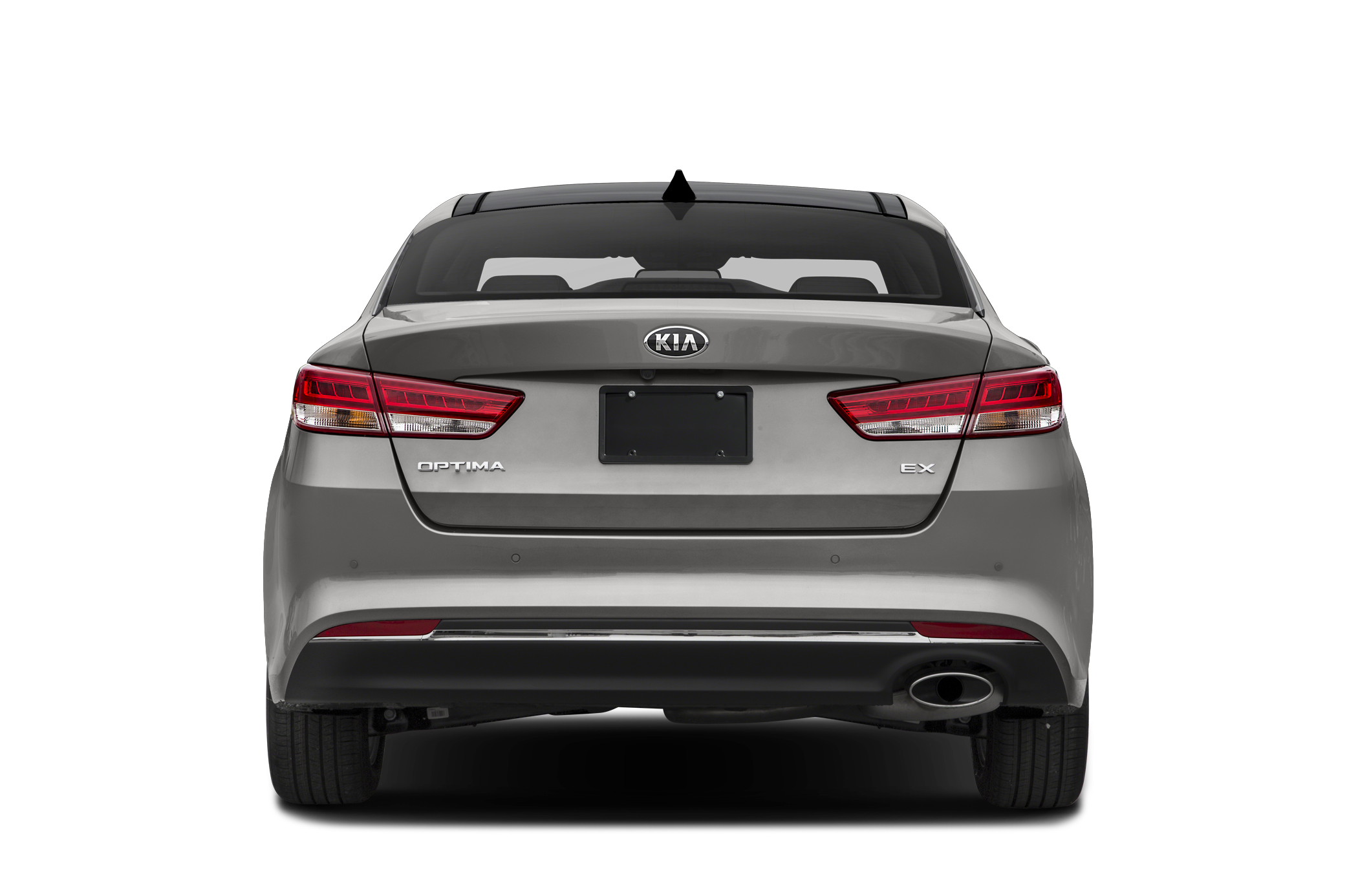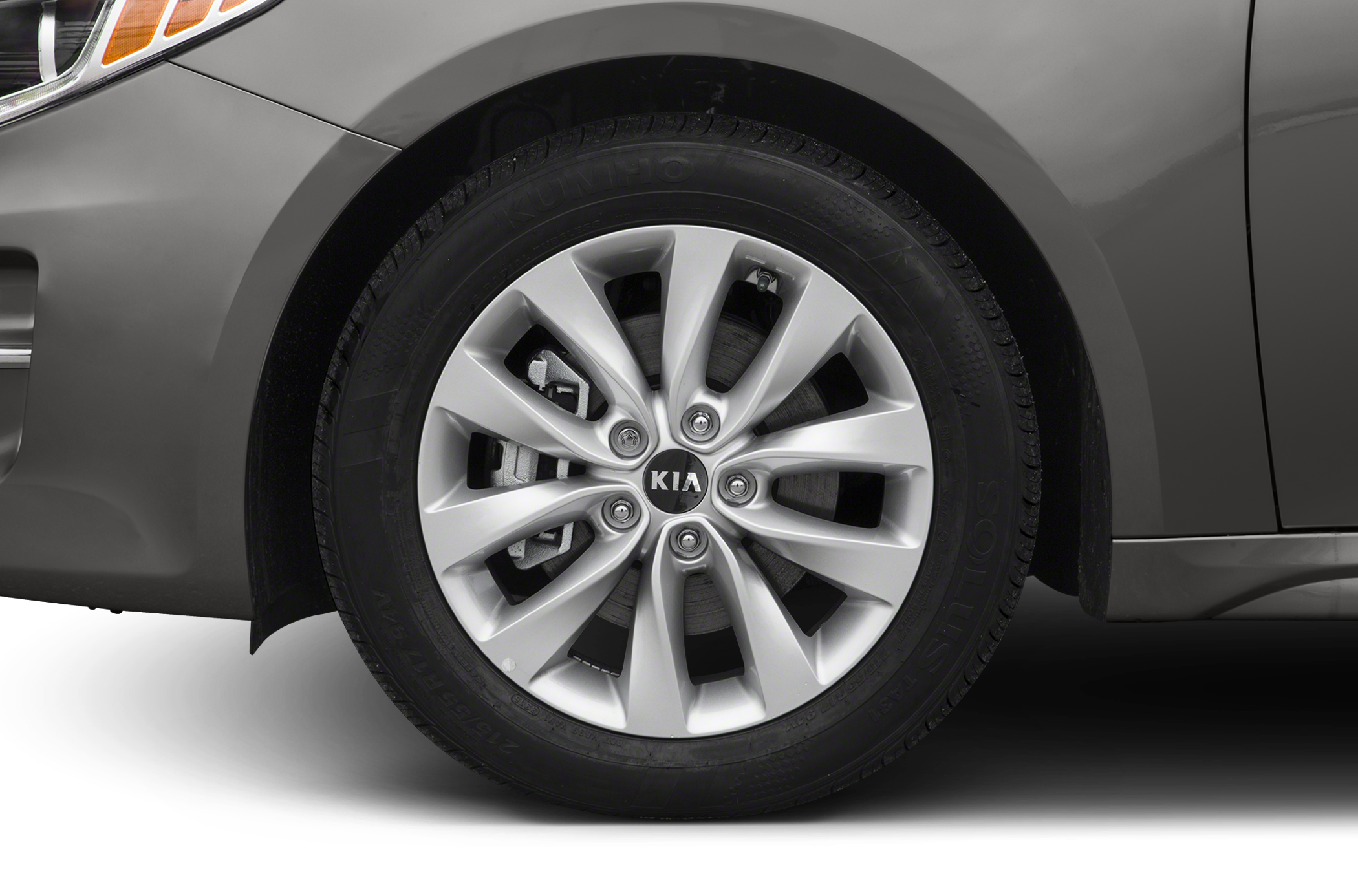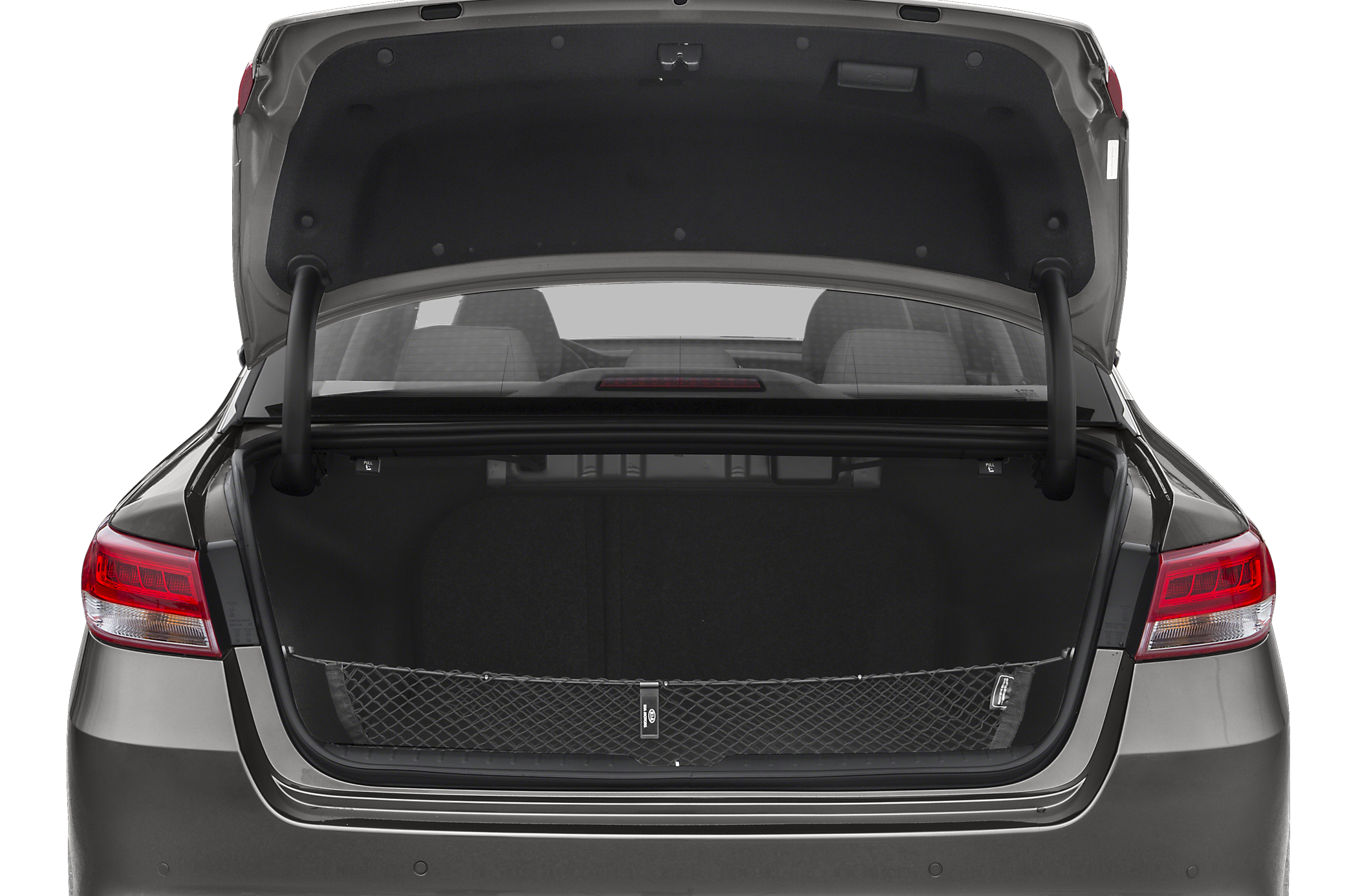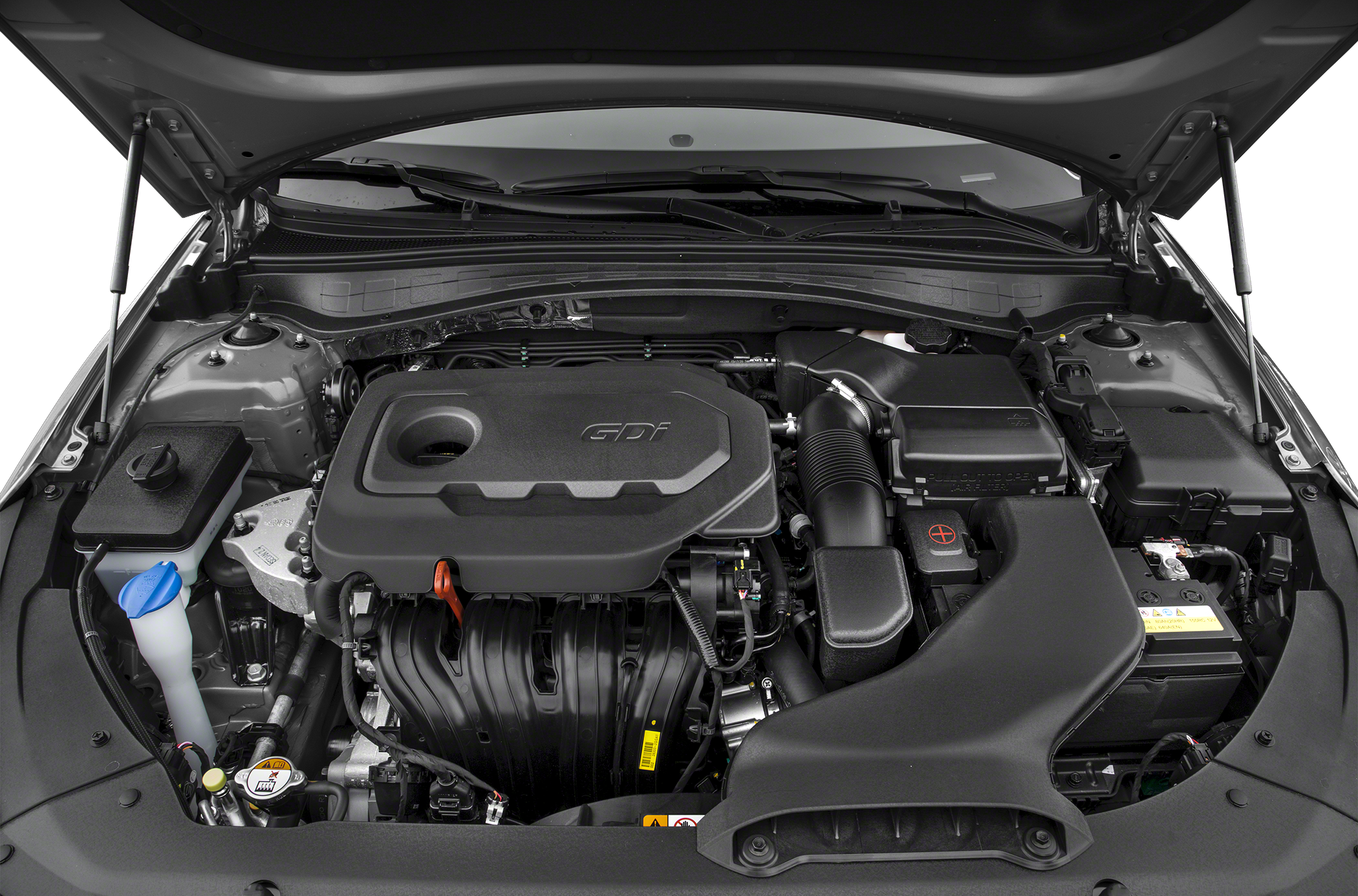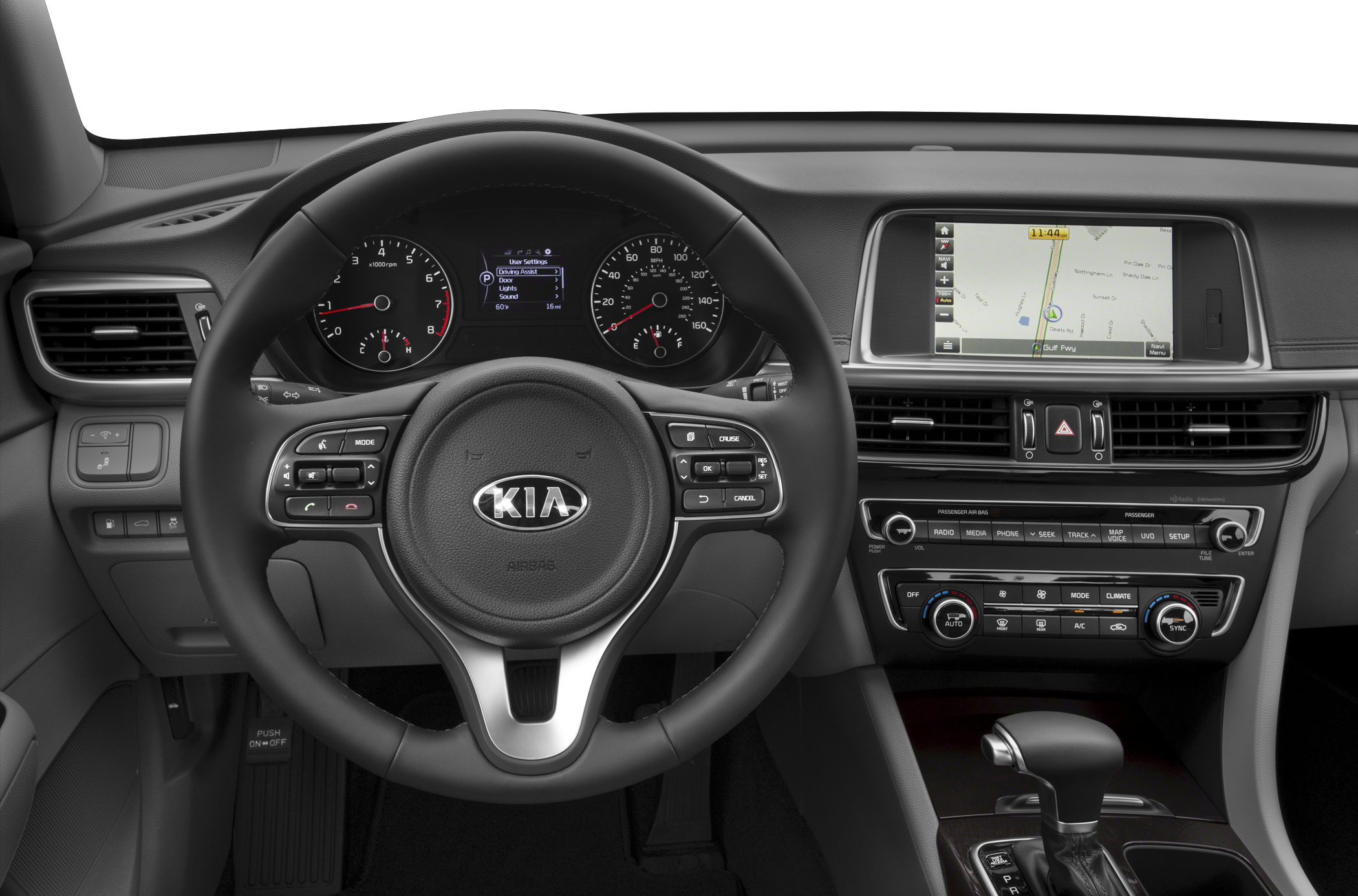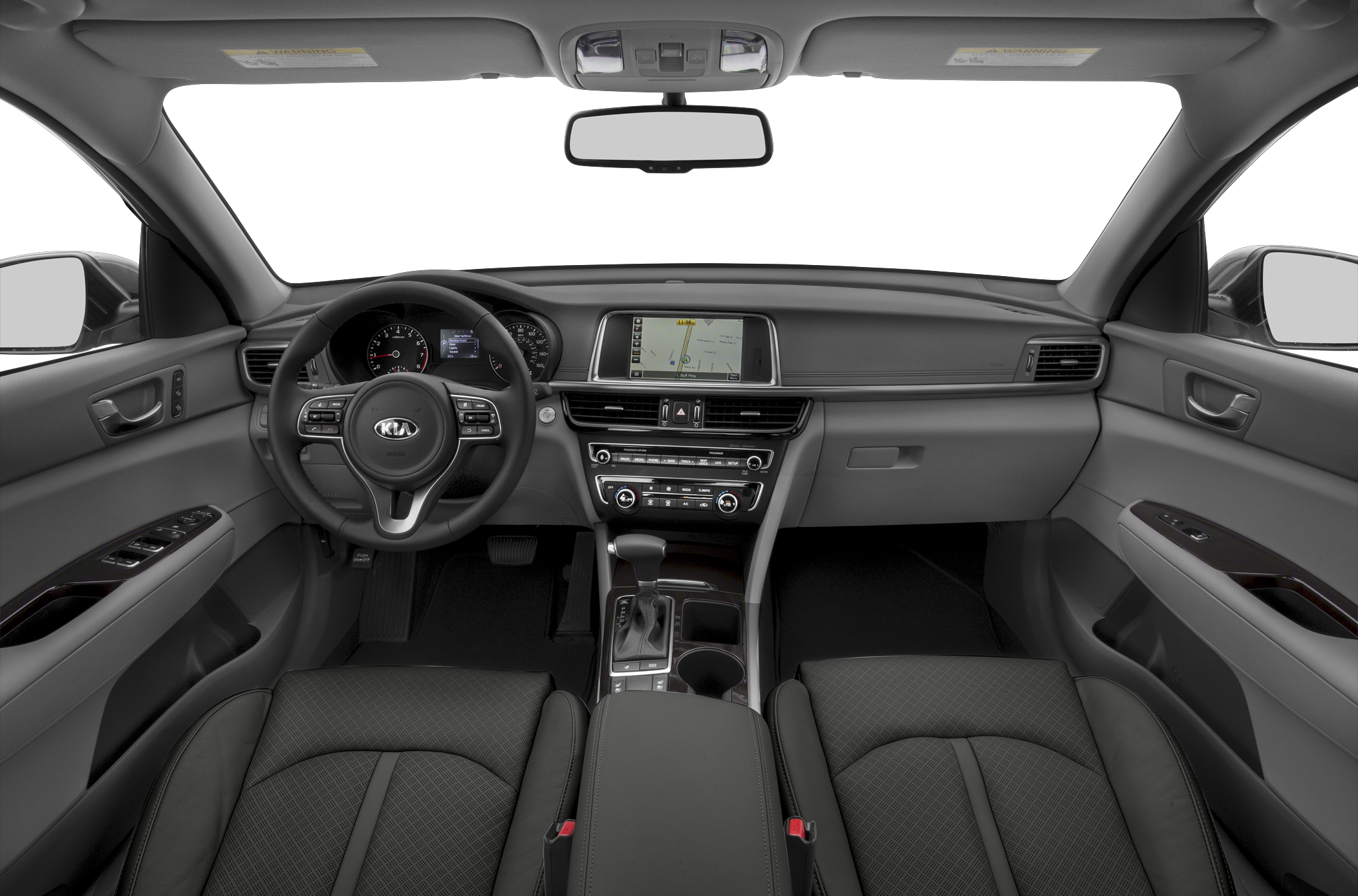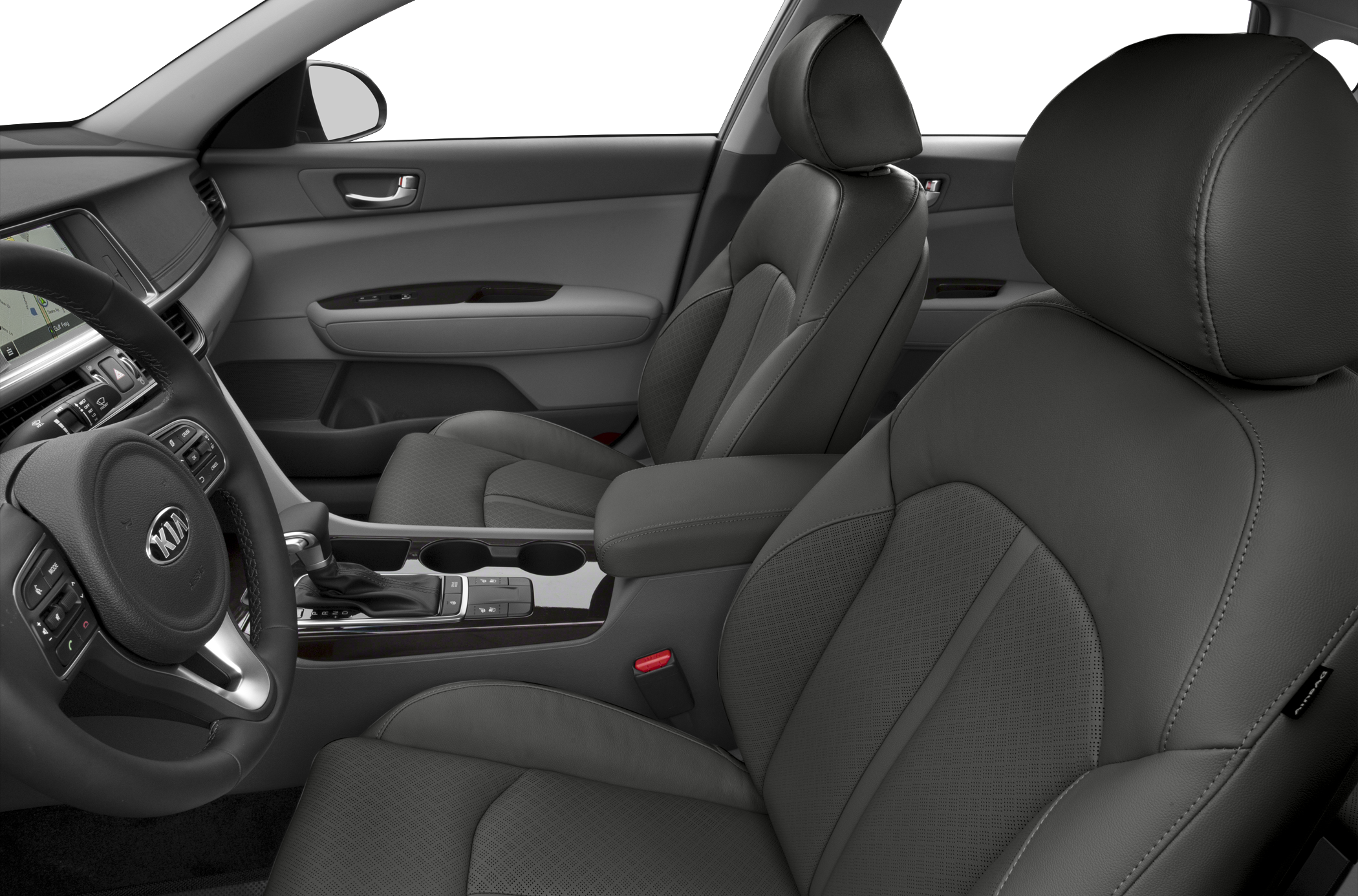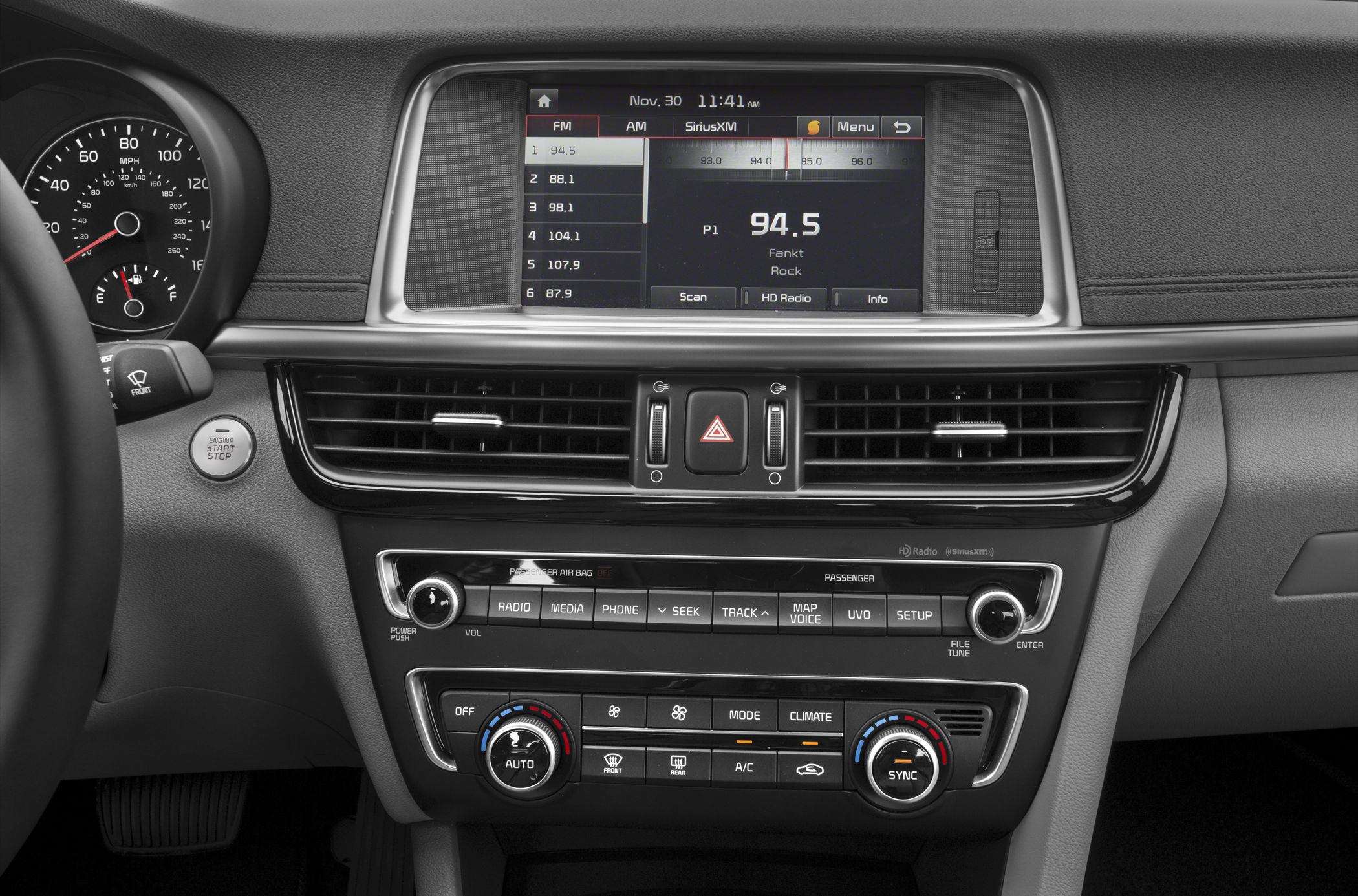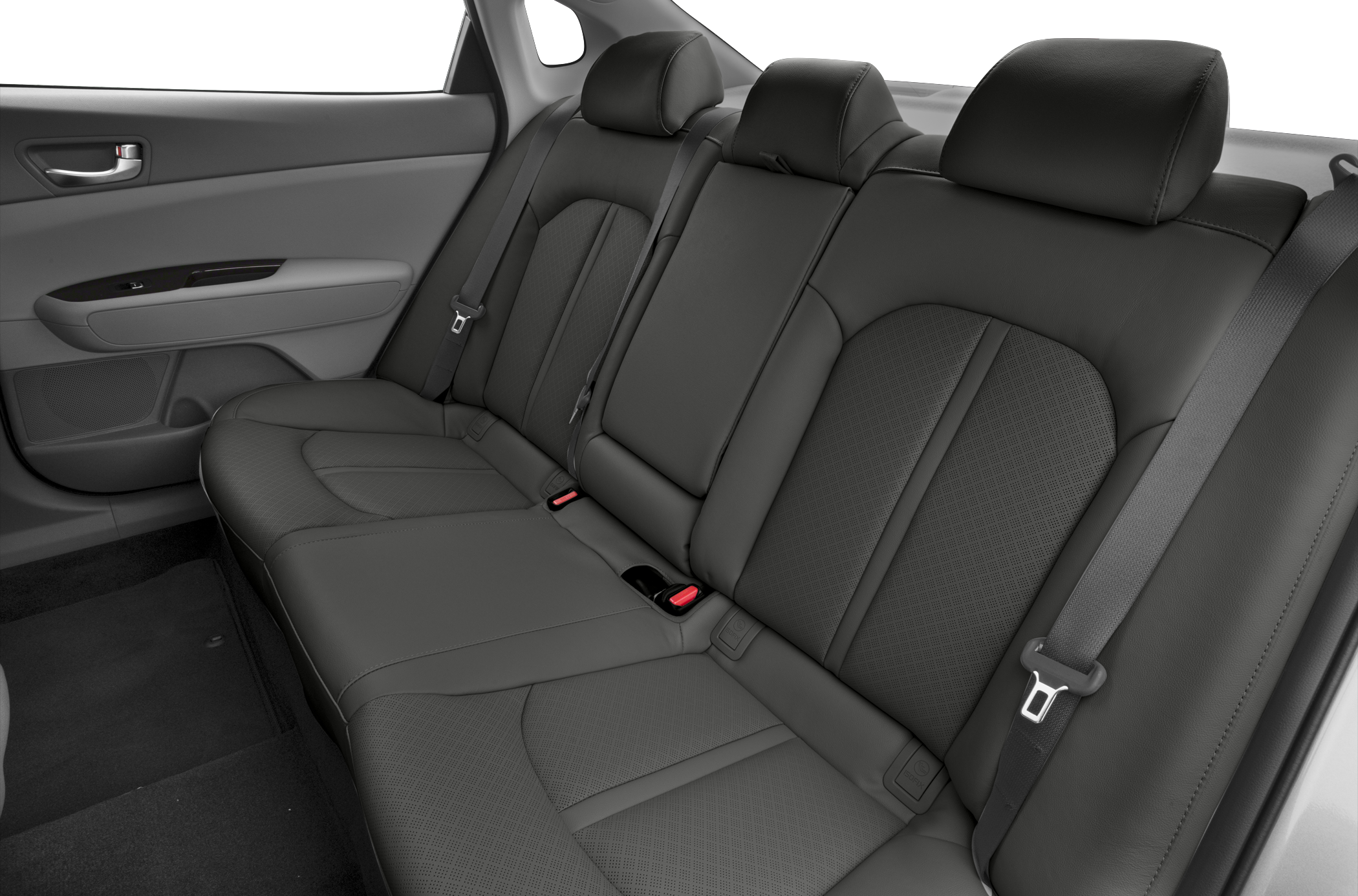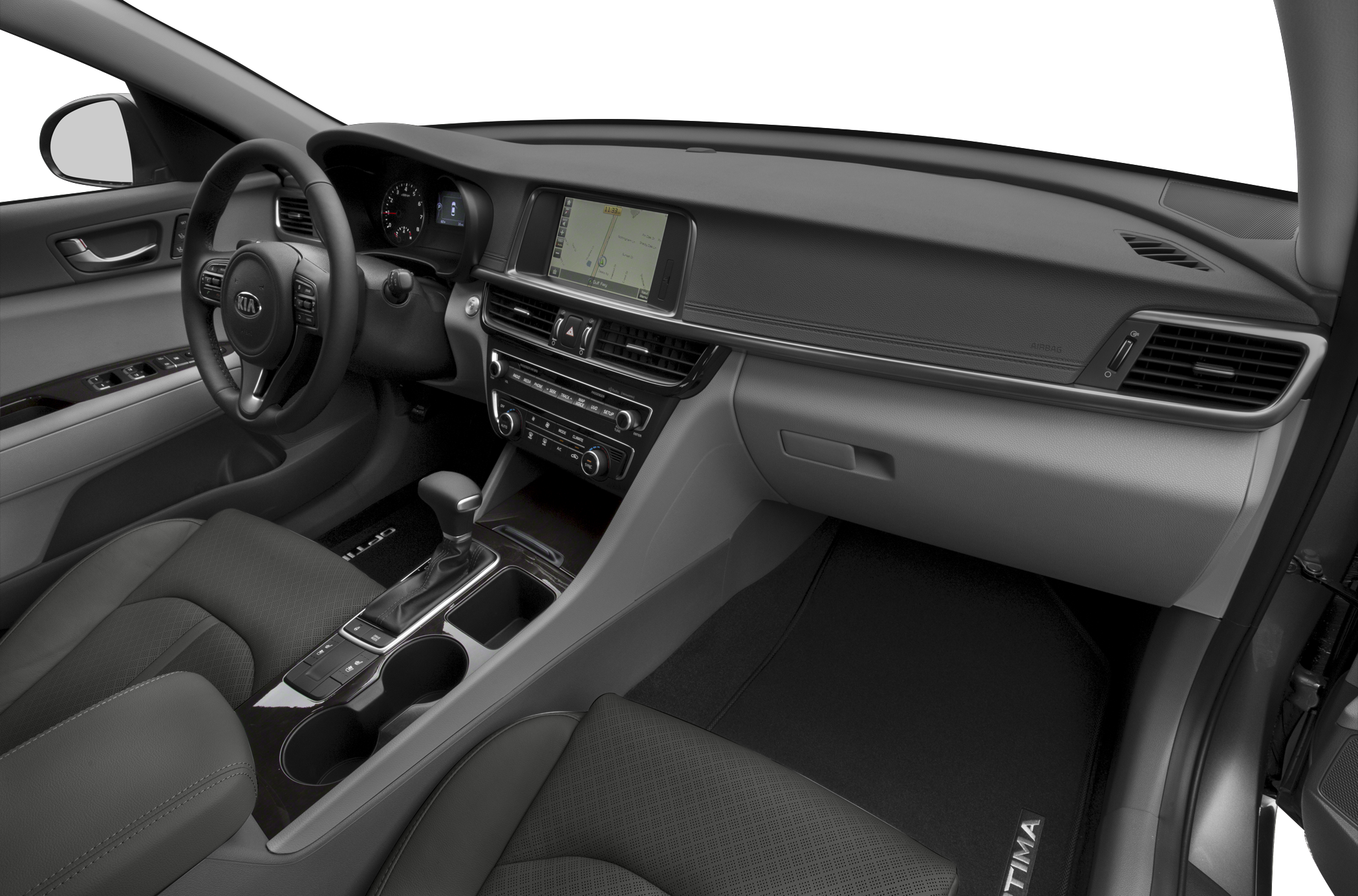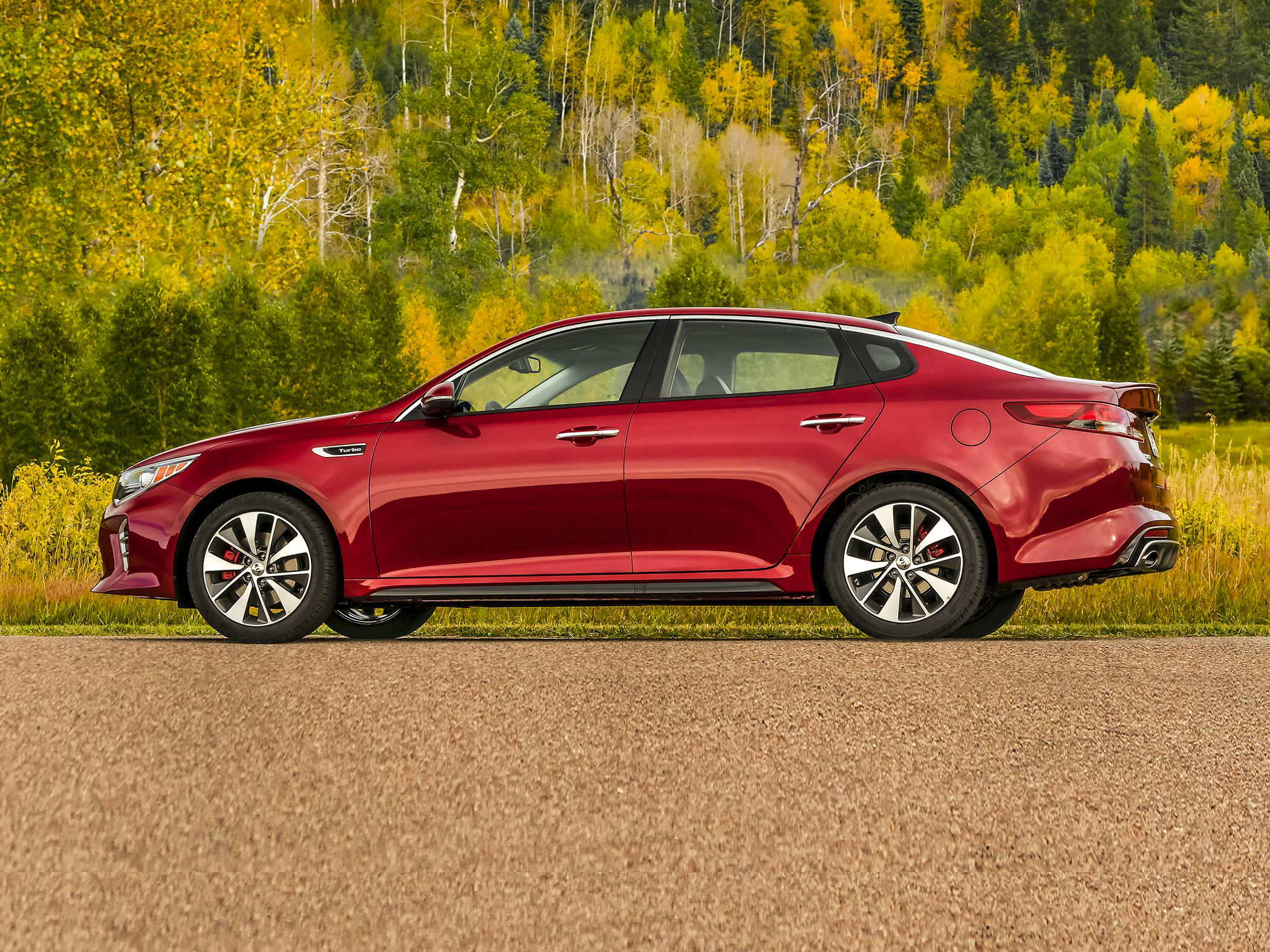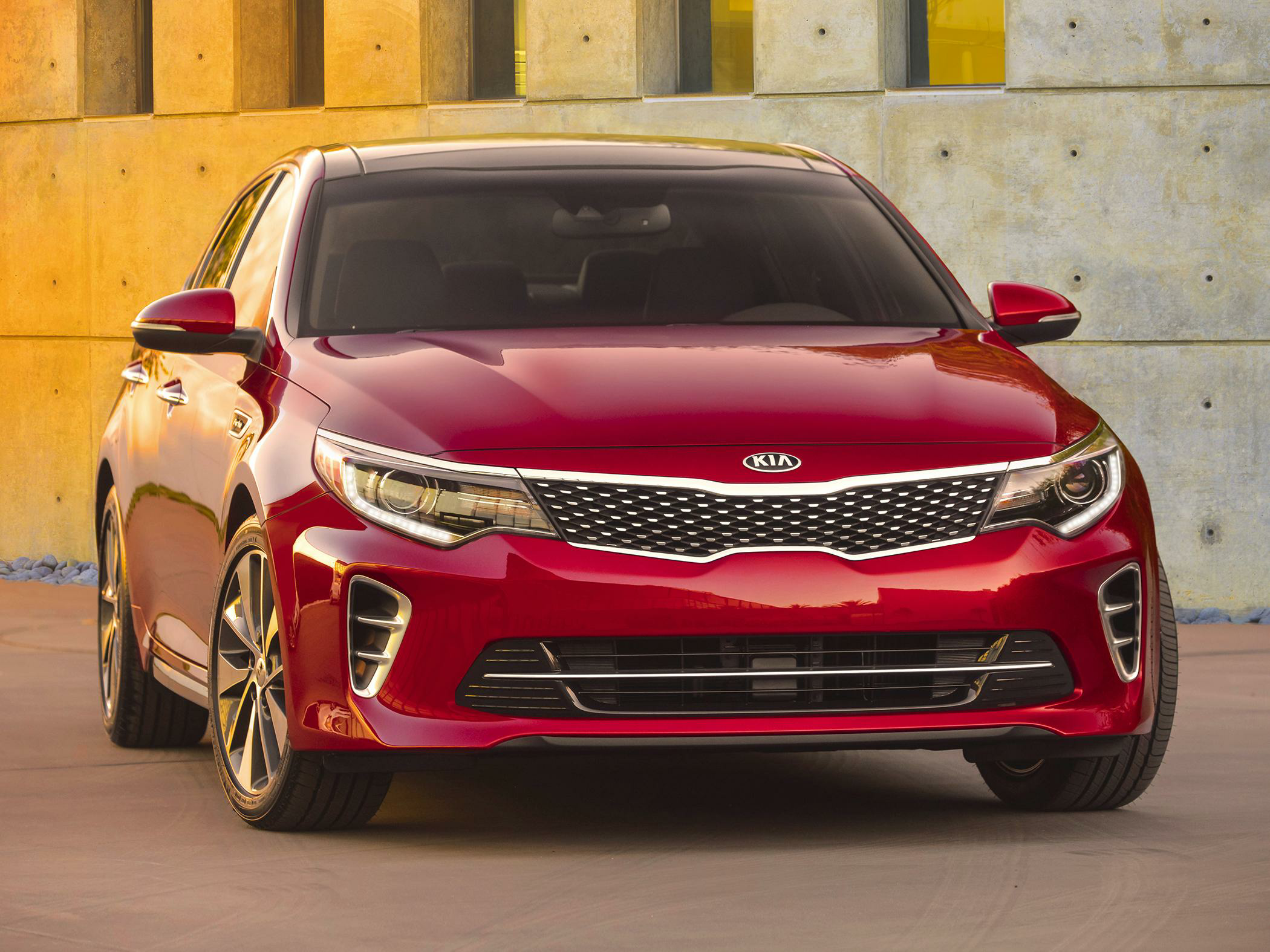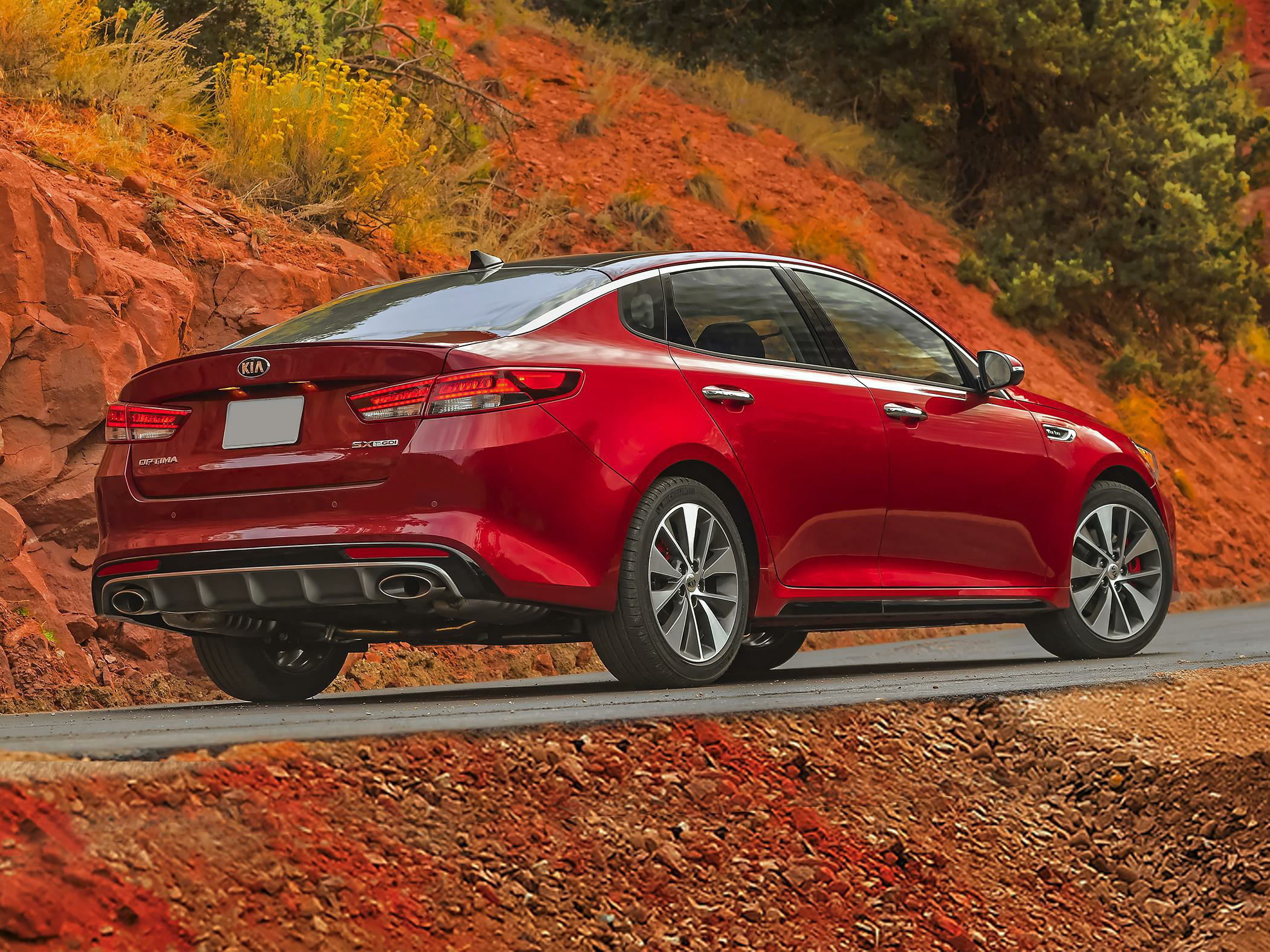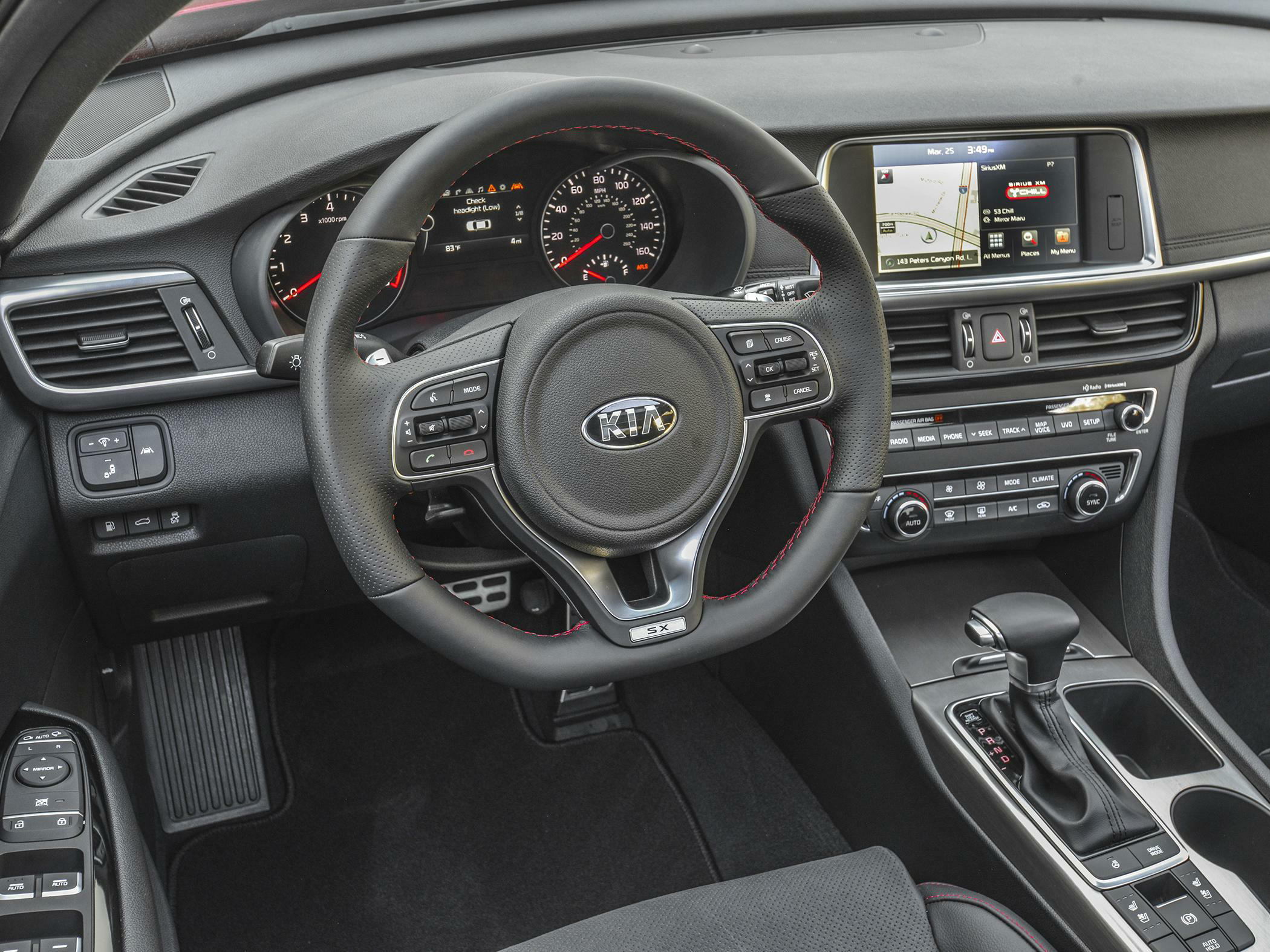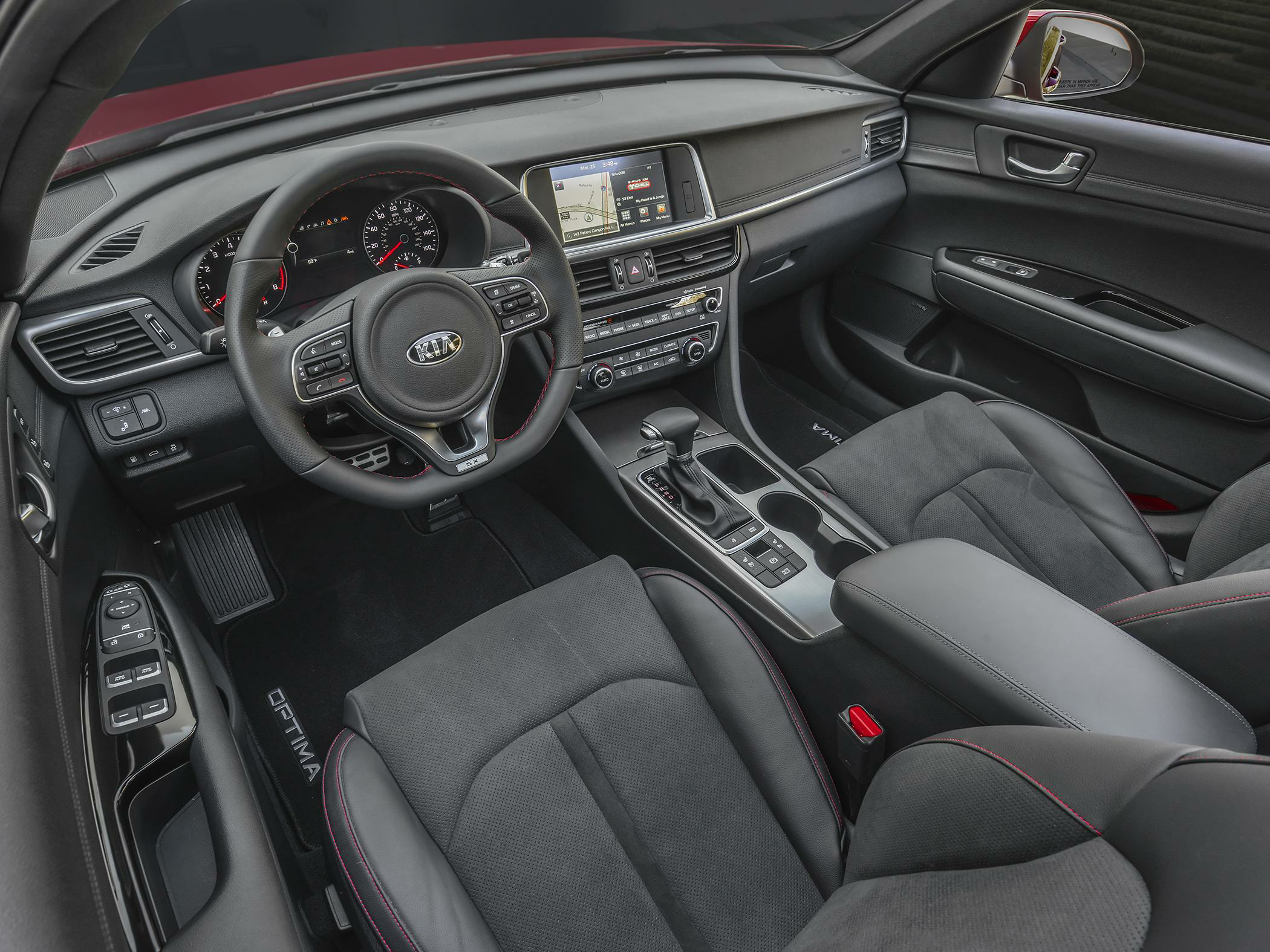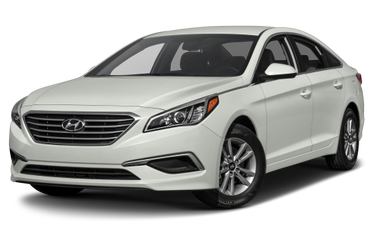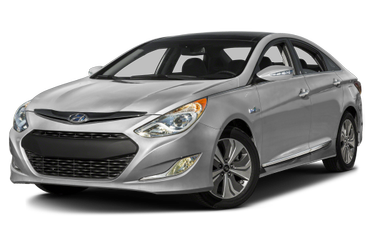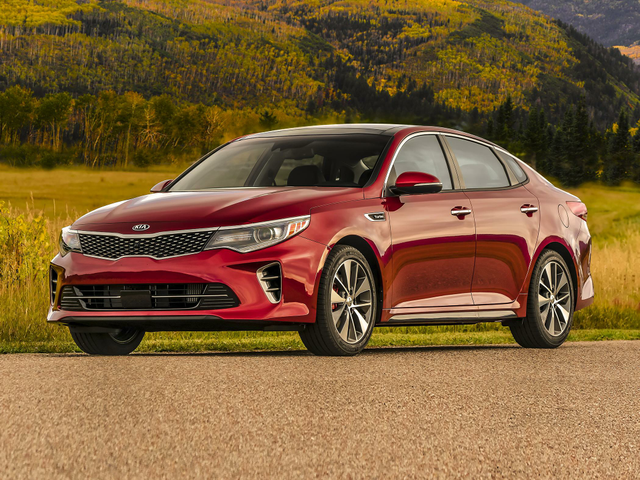The newly redesigned 2016 Kia Optima, with its blend of driving dynamics and a well-thought-out interior, remains competitive in the absolutely cutthroat midsize sedan field.
The redesigned Optima’s major improvements are under the skin: chassis tuning and an additional engine offering. For a newly redesigned car, though, the 2016 Optima doesn’t look hugely different from the previous year’s car. You can run through the rest of the changes here.
I drove a 2016 Kia Optima SXL for several hours around Aspen, Colo., over the Continental Divide and through Vail on a mix of winding mountain roads and interstate highway stretches. The Optima competes with similar body-type vehicles like the Ford Fusion, Honda Accord and Nissan Altima, among others, in the midsize sedan class.
Park a 2016 Kia Optima next to the 2015 model, and it’s not glaringly obvious what the differences are. This isn’t bad, though, because I thought the previous Optima was a good-looking, if understated, car.
The grille finishes are different on the 2016, and they vary depending on trim. The SXL I tested had a satin finish; other trims get a black grille. Sharper-eyed observers will note that the new Optima has slightly different dimensions: The wheelbase is almost half an inch longer and the vehicle is 1.1 inches wider.
For most of my drive, I put the Kia Optima in Sport mode in response to the high altitude, though I did switch between Sport and Normal to get a sense of the differences between the modes. Sport mode changes the transmission and steering response. Steering becomes heavier, but it’s not a workout; I preferred how it felt in this mode. I wouldn’t put the Optima in the same league as a luxury performance sedan, like a BMW, but it’s good for the non-luxury, non-performance class. The transmission also holds on to lower gears longer, providing more immediate response in Sport mode.
In Normal mode, the transmission quickly kicks down gears. Because it’s a six-speed, as opposed to an eight- or nine-speed transmission, downshifts happen quickly. The transmission doesn’t hunt like eight- and nine-speed models typically do, and it also doesn’t produce the odd, non-mechanical/elastic feeling of a continuously variable automatic transmission, which other models in this class use. The Optima’s power steering is much lighter in Normal than in Sport mode; it’s a touch overboosted for my liking. It’s almost like a video game, in that you don’t get the same feel that you get from the best steering setups.
Kia said the turbocharged 2.0-liter four-cylinder engine was retuned for 2016 with a smaller turbo and a torque curve that produces more lb-ft of torque at lower engine speeds. The old engine’s tuning, Kia said, provided its most power in a sudden surge higher in the rev range. The new model uses a smaller turbo and feels “gruntier,” with a broader power range. It’s a good change. Winding through tight roads was not when I wanted a sudden surge of anything.
For 2016, Kia added a new engine to the Optima mix. It’s a 178-horsepower, turbocharged 1.6-liter four-cylinder that’s paired with a seven-speed, dual-clutch automatic transmission. I briefly drove an LX 1.6T with this engine for just a quick jaunt up and down a hilly route. I didn’t have enough time in the vehicle to pass judgment on the powertrain, but I wasn’t bowled over.
Perhaps because of the hills, the Kia Optima with the 1.6-liter four cylinder seemed sluggish off the line. Once it got moving, though, it got with the program and provided better response. The shifts felt pretty smooth, but didn’t happen as quickly as I was expecting. My driving partner described it as lazy, and that echoes my initial impression of the powertrain. Further testing is warranted, because other Cars.com staffers who tested the same engine in a less hilly region had the opposite impression.
The ride in either model I tested is impressive. Our drive consisted of some fairly bumpy roads in alloy wheels, and the Optima always felt composed and predictable. It did a good job isolating the ripples and undulations of the road and dealt with all but the biggest bumps well. Kia said it reworked the chassis to include a different mix of high-strength and ultra-high-strength steel, and it altered the Optima’s suspension geometry and components to improve the chassis dynamics. The work has paid off.
The Kia Optima is also a quiet car. Wind noise was negligible, and little road noise came into the cabin. Kia said the chassis changes that helped improve the car’s dynamics also aimed to reduce cabin noise, vibration and harshness. Here again the work seems to have paid off.
There are three engines available in the Kia Optima. In addition to the two engines I tested, there’s also a 185-hp, 2.4-liter four-cylinder engine. That engine gets 24/35/28 mpg. The turbocharged 2.0-liter four-cylinder gets 22/32/25, while the turbocharged 1.6-liter four-cylinder gets 28/39/32 mpg.
Compared with the Fusion, Accord and Altima, the Kia Optima’s mileage is competitive. The best mileage the 2016 Ford Fusion gets is 28 mpg combined. The 2016 Honda Accord with a 2.4-liter four-cylinder engine tops out at 31 mpg combined, while the 2015 Altima tops out at 31 mpg combined as well (the EPA hasn’t yet rated the 2016).
To look at other differences between the competitors, check out this comparison.
Front-seat passengers can rejoice, because they now can have basically the same seat controls as the driver, including height adjustment, so those of short stature can see down the road better. And that’s not just for the highest trim levels: In an Optima LX I took for a quick jaunt, the passenger’s manually adjusting seat also had height adjustment. I did notice, however, that the lumbar support on the passenger side in the SXL isn’t height-adjustable as it is for the driver.
The center controls are canted toward the driver, but not so far that I couldn’t easily adjust the climate controls or read the navigation screen from the passenger seat. (In fact, if Kia hadn’t told me the controls were angled toward the driver, I doubt I would have noticed.) There’s good room for the front-seat passenger; I never felt pinned in or bumped elbows with my driving partner.
Overall, the interior’s design is OK, but it’s let down by an element I just don’t think works. Kia’s designers used a trim piece to create a distinct horizontal line across the dashboard. Above the line is a touch-screen, below it are physical controls. It almost works, except that passengers are then faced with a broad expanse of empty dashboard that I just didn’t find pleasing. I also didn’t like the graining or texture of the dashboard. This was less of an issue when I was driving, but as a passenger I wasn’t impressed.
In terms of materials, the top-of-the-line SXL has padding where you want it; in general, it felt like it measured up to its class. A nit I have to pick is that I didn’t like the horn button. Something about the plastic graining and its round shape stuck out in a bad way. It just didn’t look as rich as I wanted it to.
While I wasn’t able to spend as much time in the lower LX 1.6T trim, I can say the cloth seats felt supportive and high-quality. I wasn’t as sold on how the cloth looked. It’s not terrible, but I wouldn’t put it at the top of the segment. The overall look of the interior — including the stitching and horizontal segmentation of the dashboard — remains in the lesser trim. While it’s not as opulent as the SXL, it looks presentable.
In terms of interior room, the 2016 Kia Optima offers more legroom up front and more headroom front and rear than the Fusion, Accord or Altima, but it offers the least legroom in back. Compare interior specs for the SXL trim I tested with the other models’ high-end trims here.
Practically, though, backseat room is competitive with the class. With the driver’s seat set where I’d want it, I had plenty of room for my legs in the seat behind it. My knees were raised slightly, but I don’t think it’d be intolerable even on a longish drive. It certainly didn’t feel worse than other midsize vehicles I’ve been in lately. Headroom is also good, even with the panoramic moonroof on the SXL I drove.
Ergonomically, the Kia Optima is a very sound vehicle. The controls are easy to find and use, nothing felt awkward, and everything was laid out in a straightforward manner. The only control whose location I kept forgetting was the button that switched between Sport, Normal and Eco modes. Experience tells me that’s not a button I use with any great frequency in my day-to-day driving, though, so that doesn’t bug me.
Overall, the electronics worked well, allowing for easy changes between menus. The graphics, while not as crisp as those found in Ford’s MyFord Touch setup, were good for the non-luxury segment.
An especially good electronic feature Kia offers is an around-view camera setup that gives you a 360-degree surround-view around the Optima. I found Kia’s system to be the best of any such system I’ve tested; it seemed to offer the widest view around the Optima. Some systems — particularly the first ones on the market — gave a sense only of what was within 6 inches of the side of the car. The Kia system stretches the field of vision to show a much larger area. Other carmakers should take note of how well this system works.
The new Kia Optima’s slightly larger dimensions result in a slightly larger trunk. Kia says the 2016 Optima’s trunk is half a cubic foot larger than the 2015 model. The trunk is a good size and wide, but it isn’t the deepest opening from front to back in the class.
As far as the cabin goes, there’s a nice selection of bins and cubbies for things like water bottles, phones and notebooks. In particular, there was a nice-sized tray ahead of the gearshift, with a second (very useful) cubby between that and the cupholders.
The 2016 Kia Optima had not been crash-tested by either the Insurance Institute for Highway Safety or the National Highway Traffic Safety Administration as of publication.
In addition to the required front airbags, antilock brakes and electronic stability system, Kia offers a number of safety features, including rear cross-traffic alert, blind spot warning, lane departure warning, forward collision warning with autonomous braking and the aforementioned around-view monitor.
All those features are standard on the SXL I tested and optional on the SX trim. The autonomous braking system, lane departure warning and around-view monitor are not available on EX or LX models. Check the entire list of safety specifications here.
The 2016 redesign is a good effort that puts the Optima among the top of the class. Highlights include the improved chassis and overall interior quality.
While I didn’t like some of the interior design choices, and I wasn’t blown away by the newest engine, nothing in what I saw suggests Kia has screwed up the Optima. That’s significant when you’re dealing with a vehicle that was already good to start with.
Yet while substantial work has been done under the skin, there’s little outward sign that the Optima has been redesigned. To sense the improvements, you really need to drive it. And in the midsize sedan market, where every significant automaker has an offering, having a little outward pizzazz indicating this is the new Kia Optima wouldn’t be the worst idea.
As it is, Kia has an improved, good midsize sedan that impresses, but does little to grab your attention when it passes by.



